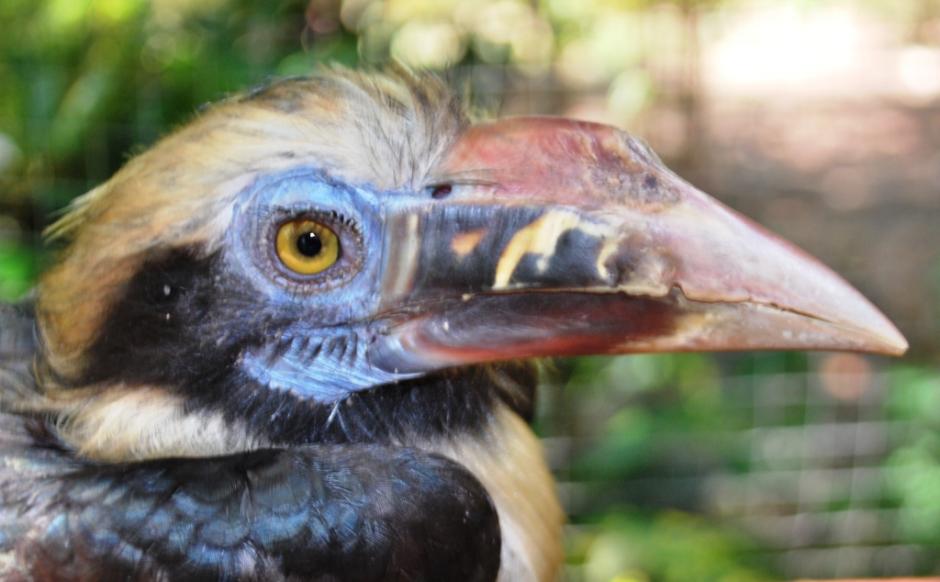Welcome Kabayan!
Feel free to browse around for photos, stories and information all about Naujan.
Kanlungan sa Naujan
Categories
-
Recent Posts
Recent Comments
- Vener EStorque Albufera on Naujan Academy
- Fr Matthew Gibson on San Nicolas de Tolentino, Patron Saint of Naujan
- rhealyngerpacio on The 70 Barangays of Naujan
- Arvin Parin on Inarawan National High School (INHS)
- Aiko Passion Mendoza on Municipal Government Offices
-
Like Us on FB
DISCLAIMER
Naujan.com, unless otherwise noted, do not own the pictures posted in this site. Credits are due to our fellow Naujeños who continue to share their stories, information, and photos to our kababayans everywhere.
-
Background photos by Marlon T. Abuan, Raymund Valenton, JL Reyes, Mon Robles, Norman Belino, Jay Feudo Hernandez and Dr. RM Del Mundo.

Feb
18
2012
 0
0Photo courtesy of JctGonzales of the Internet Bird Collection
The Mindoro Tarictic Hornbill (Penelopides Mindorensis), sometimes shortened to Mindoro Hornbill, is a species of hornbill in the Bucerotidae family. It is endemic to forests of Mindoro. It is the only tarictic hornbill where both sexes are creamy-white and black. The sexes are very similar, and primarily differ in the color of the ocular ring (pinkish-white in the male, blue in the female).
The Mindoro Tarictic Hornbill is not currently being kept in captivity and is threatened by habitat loss, and is consequently considered endangered by IUCN.
The species was “exceedingly abundant” at the end of the nineteenth century and birds were common along the lower Baco River and numerous at Balete in 1905. The species was considered fairly common in lowland areas in 1954, but rarely been observed. It is thought to remain in very small numbers and at low densities, and it has been recorded at only five localities (among which is Naujan) since 1990.
This species is recorded in primary forest, forest edge, secondary growth and occasionally in tiny isolated woodlots and even single fruiting trees in cultivated areas, ranging rarely up to 1,000 m. It has been said to feed “mainly on forest edges and in small patches of forest”, but it may nonetheless remain dependent on larger tracts of closed forest for nest-sites and some food resources. It was also observed within or on the edge of patchy primary forest, in a narrow streamside patch of forest and in recently logged forest.
Food Fruits of figs are known to be utilized and are probably a key item of diet, but there is no further information. Birds were recorded feeding on fruit in a tree “within a few feet” of a house at Chicago near the north coast.
There is no information on breeding, except that a female at Lake Naujan had enlarged gonads in May. There is no evidence that this species undertakes seasonal or other types of displacement, but at least occasional nomadism seems likely.
Threats
The problems facing this species are essentially the same as those afflicting the Mindoro Bleeding-heart Gallicolumba platenae, except that shooting of birds in trees replaces snaring of birds on the ground as the form of human persecution practised. Hunting, against which there is no legislation, is mainly for food, and the species is easy to detect and shoot; at three localities it was reported that between two and five hornbills can be taken in a week.
Moreover, dynamite blasting for marble prospection at Mt Malasimbo is forcing the species to retreat upslope. No further deforestation of Mindoro is reported to be planned, but this is not to say that it is not occurring. Moreover, many hornbill nest-trees were toppled by a flood in December 1993, which submerged much of eastern Mindoro; doubtless the effects of this flood were exacerbated by deforestation.
Measures Taken
Information provided in the equivalent section for Mindoro Bleedingheart relating to Siburan (a “key site”) and Puerto Galera is relevant here. While the Mindoro Tarictic has been recorded at Mt Iglit-Baco National Park, the lack of coverage by any other protected area needs urgently to be addressed. The species is listed on Appendix II of CITES.
Apart from the areas targeted for conservation above, the species is known from three “key sites” (Mt Halcon, Lake Naujan, Malpalon) and these deserve formal designation under the NIPAS process (although in the case of Lake Naujan it needs to be established if and where sufficient forest occurs to support this species).
*Sources: Haribon Foundation



